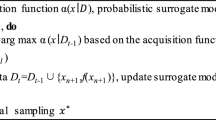Abstract
Prediction model allows the machinist to determine the values of the cutting performance before machining. According to the literature, various modeling techniques have been investigated and applied to predict the cutting parameters. Response surface methodology (RSM) is a statistical method that only predicts effectively within the observed data provided. Most artificial intelligent systems mostly had an issue with user-defined data and long processing time. Recently, the extreme learning machine (ELM) method has been introduced, combining the single hidden layer feed- forward neural network with analytically determined output weights. The advantage of this method is that it can overcome the limitations due to the previous methods which include too many engineers’ judgment and slow iterative learning phase. Therefore, in this study, the ELM was proposed to model the surface roughness based on RSM design of experiment. The results indicate that ELM can yield satisfactory solution for predicting the response within a few seconds and with small amount of error.
Similar content being viewed by others
References
Kalpakjian S.; Steven R.S.: Manufacturing Engineering and Technology. Prentice Hall, Englewood Cliffs (2006)
Zuperl U.; Cus F.: Optimization of cutting conditions during cutting by using neural networks. Robot. Comput. Integr. Manuf. 19, 189–199 (2003)
Rao C.J.; Rao D.N.; Srihari P.: Influence of cutting parameters on cutting force and surface finish in turning operation. Int. Conf. Des. Manuf. 64, 1405–1415 (2013)
Benardos P.; Vosniakos G.-C.: Predicting surface roughness in machining: a review. Int. J. Mach. Tools Manuf. 43, 833–844 (2003)
Noordin M.Y.; Venkatesh V.C.; Sharif S.; Elting S.; Abdullah A.: Application of response surface methodology in describing the performance of coated carbide tools when turning AISI 1045 steel. J. Mater. Process. Technol. 145, 46–58 (2004)
Bouacha K.; Yallese M.A.; Mabrouki T.; Rigal J.: Statistical analysis of surface roughness and cutting forces using response surface methodology in hard turning of AISI 52100 bearing steel with CBN tool. Int. J. Refract. Met. Hard Mater. 28, 349–361 (2010)
Mookherjee R.; Bhattacharyya B.: Development of an expert system for turning and rotating tool selection in a dynamic environment. J. Mater. Process. Technol. 113, 306–311 (2001)
Matlob A.S.; Kamarudin R.A.; Jubri Z.; Ramli Z.: Using the response surface methodology to opyimize the extraction of silica and alumina from coal fly ash for the synthesis of Zeolite Na-A. Arab. J. Sci. Eng. 37, 27–40 (2012)
Aggarwal A.; Singh H.; Kumar P.; Singh M.: Optimization of multiple quality characteristics for CNC turning under cryogenic cutting environment using desirability function. J. Mater. Process. Technol. 205, 42–50 (2008)
Karayel D.: Prediction and control of surface roughness in CNC lathe using artificial neural network. Journal of Materials Processing Technology. 209, 3125–3137 (2009)
Huang G.B.; Zhu Q.-Y.; Siew C.-K.: Extreme learning machine: theory and applications. Neurocomputing 70, 489–501 (2006)
Miche, Y.; Bas, P.; Jutten, C.; Simula, O.; Lendasse, A.: A Methodology for Building Regression Models using Extreme Learning Machine: OP-ELM. ESANN, pp. 247–252 (2008)
Huang, G.; Zhu, Q.; Siew, C.: Proceedings of International Joint Conference on Neural Networks, p. 985 (2004)
Huang G.: Learning capability and storage capacity of two-hidden-layer feedforward networks. IEEE Trans. Neural Netw. 14(2), 274–281 (2003)
Mukherjee I.; Ray P.K.: A review of optimization techniques in metal cutting processes. Comput. Ind. Eng. 50, 15–34 (2006)
Ferreira S.; Bruns R.; Ferreira H.; Matos G.; David J.; Brando G.; da Silva E.; Portugal L.; dos Reis P.; Souza A.; dos Santos W.: Box–Behnken design: an alternative for the optimization of analytical methods. Anal. Chim. Acta. 597, 179–186 (2007)
Yetilmezsoy K.; Demirel S.; Vanderbei R.J.: Response surface modeling of Pb(II) removal from aqueous solution by Pistacia vera L.: Box–Behnken experimental design. J. Hazard. Mater. 171, 551–562 (2009)
Alvarez L.F.: Approximation Model Building for Design Optimization Using the Response Surface Methodology and Genetic Programming. Theses University of Bradford, UK (2000)
Ahilan C.; Kumanan S.; Sivakumaran N.; EdwinRaja Dhas J.: Modeling and prediction of machining quality in CNC turning process using intelligent hybrid decision making tools. Appl. Soft Comput. 13, 1543–1551 (2013)
Park K.S.; Kim S.H.: Artificial intelligence approaches to determination of CNC machining parameters in manufacturing: a review. Artif. Intell. Eng. 12, 127–134 (1998)
Liu, X.; Gu, H.: Hyperbolic tangent function based two layers structure neural network. In: Electronics and Optoelectronics (ICEOE), 2011 International Conference, vol. 4, pp. 34-37 (2011)
Natarajan C.; Muthu S.; Karuppuswamy P.: Prediction and analysis of surface roughness characteristics of a non-ferrous material using ANN in CNC turning. Int. J. Adv. Manuf. Technol. 57, 1043–1051 (2011)
Feng G.; Huang G.-B.; Lin Q.; Gay R.: Error minimized extreme learning machine with growth of hidden nodes and incremental learning. Neural Netw. 20, 1352–1357 (2009)
Author information
Authors and Affiliations
Corresponding author
Rights and permissions
About this article
Cite this article
Ahmad, N., Janahiraman, T.V. & Tarlochan, F. Modeling of Surface Roughness in Turning Operation Using Extreme Learning Machine. Arab J Sci Eng 40, 595–602 (2015). https://doi.org/10.1007/s13369-014-1420-0
Received:
Accepted:
Published:
Issue Date:
DOI: https://doi.org/10.1007/s13369-014-1420-0




